Small snake species like the Rosy Boa, Kenyan Sand Boa, and Barbados Threadsnake stand out as incredibly endearing creatures. These tiny slithering beauties offer an interesting journey into reptile ownership due to their manageable size and minimal feeding needs. Surprisingly, these miniatures not just save you on space but also bring about a unique sense of excitement among reptile lovers and beginners alike. Ready now, let’s delve deeper into the world of these charming little snakes.
One example of a cute tiny snake is the Barbados Threadsnake, which is the world’s smallest known snake and is non-venomous. Another adorable example is the Kenyan Sand Boa, a small and easy-to-maintain pet snake with a variety of cool morphs. These snakes appeal to enthusiasts due to their charming appearance and manageable size.
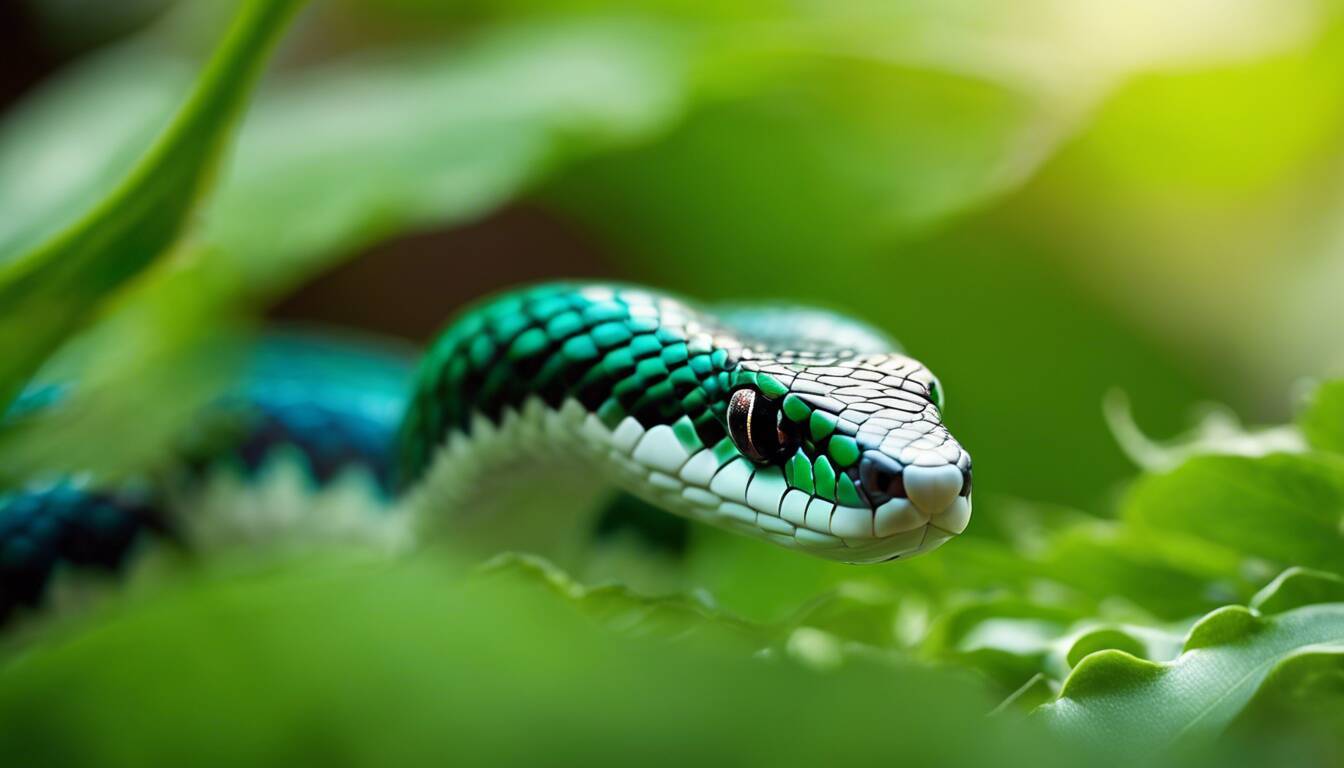
The Adorable World of Tiny Snake Species
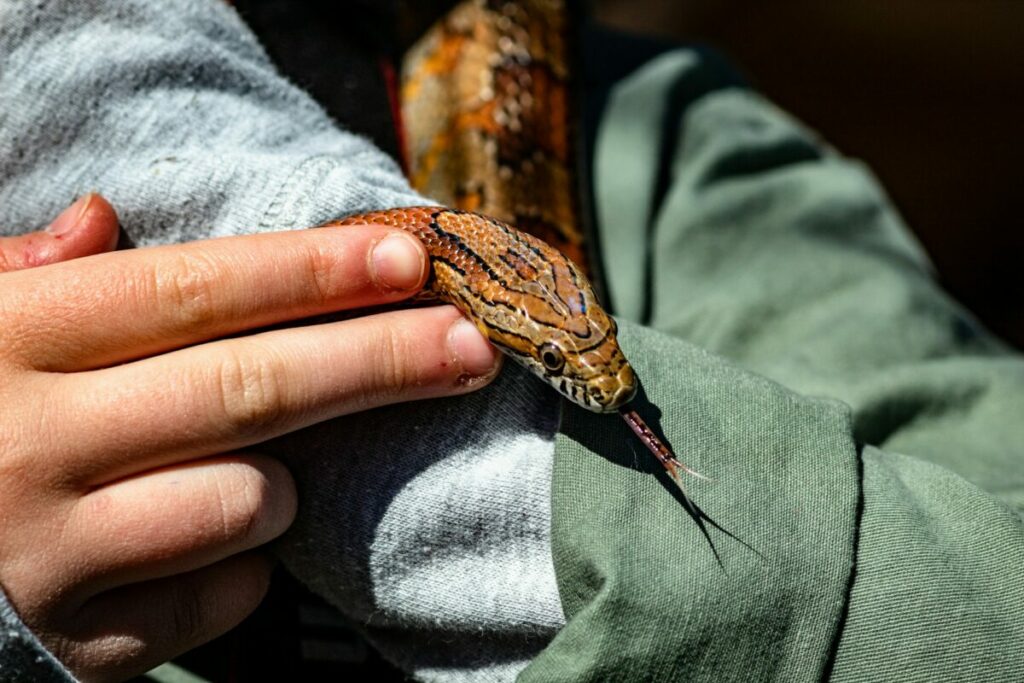
There’s an undeniably charming quality about tiny snakes. Their diminutive size, colorful patterns, and unique behaviors make them appealing options for those interested in owning a pet snake. But owning a tiny snake isn’t just about having an adorable companion; it’s also about the manageable responsibilities that come with caring for a smaller reptile.
One prominent reason why these small creatures are gaining popularity is their modest spatial requirements compared to larger snake species. The prospect of providing adequate space for a pet can be daunting, especially for first-time reptile owners or individuals residing in urban settings where living space is limited. Tiny snakes, such as the Kenyan Sand Boa, Nuevo Leon Kingsnakes, and Corn snakes, offer a solution to this concern. These species thrive in relatively compact enclosures without compromising their well-being. This characteristic not only appeals to beginners but also anyone who seeks a low-maintenance pet.
Additionally, their modest feeding habits contribute significantly to their appeal. Small snake species like Garter snakes and Corn snakes have less demanding dietary requirements compared to their larger counterparts. Feeding them smaller prey items at less frequent intervals reduces the complexity associated with meal preparation and ensures that owners can comfortably accommodate their pets’ needs within their daily routines.
For instance, the Male Kenyan Sand Boa grows to a maximum length of 16-20 inches, making them an ideal choice due to their convenient size and feeding habits. The allure of small snake species lies in more than just their adorable appearance; it’s about creating an engaging and fulfilling relationship between owner and pet without overwhelming commitments.
Moving beyond mere aesthetics and ease of care, let’s consider the captivating behaviors and interactions that make tiny snake species an alluring choice for reptile enthusiasts and beginners alike.
Attractive Features: Color, Size, and Behavior of Tiny Snakes
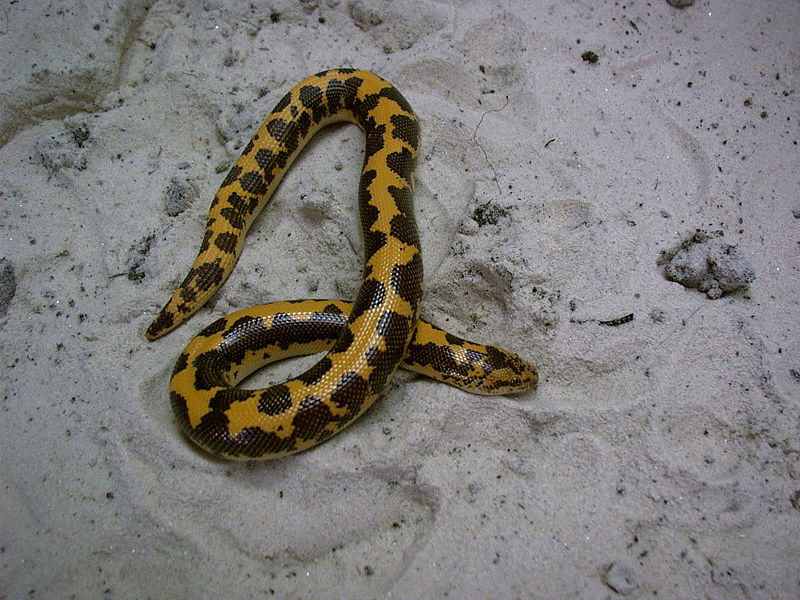
One of the most enchanting things about tiny snake species is their remarkable variety of colors and sizes. Each type boasts its own unique palette of colors, ranging from vibrant reds and pinks to sandy earth tones. For instance, the Rosy Boa captivates with its various shades of brown and pink, while the Kenyan Sand Boa often sports captivating hues of yellow, orange, or brown with striking dark markings. These stunning color variations make them stand out as eye-catching and attractive pets that are sure to spark conversations.
Their diminutive size further adds to their appeal. Typically measuring under two feet in length, these small snakes are incredibly manageable and offer a practical choice for pet owners with limited space. Whether you live in a cozy apartment or have a small living space, these tiny snakes can comfortably fit into your lifestyle without requiring excess room or maintenance.
In addition to their visual aesthetics, the behavior and temperament of these small snake species make them even more endearing as pets. Unlike some larger or more intimidating snakes, these tiny creatures tend to display docile behavior and approachable temperaments. This means that they are often more suitable for first-time snake owners who may be hesitant about taking care of a reptile.
It’s fascinating how tiny snakes manage to combine captivating visuals with a manageable size and friendly temperament, making them an excellent choice for anyone considering a pet snake.
Take the Western Hognose Snake, for instance. With its distinctive color patterns including shades of orange, red, and brown, it presents an alluring visual display. Combine this with its non-aggressive nature and relatively small size (approximately 14 to 24 inches long), and it becomes clear why it is considered an attractive option for those venturing into snake ownership for the first time.
Next, we’ll delve deeper into the different behaviors and temperaments that make these tiny snakes not only captivating but also easily manageable as pets. Their gentle nature will undoubtedly surprise those unfamiliar with these adorable creatures.
See Related: Snake Urine: What Does It Look Like and How to Identify the Snake Species?
Housing Baby and Small Snakes: Appropriate Habitats
When it comes to creating a suitable habitat for baby and small snakes, several crucial factors need to be considered to provide them with a comfortable and secure environment. Let’s delve into the key elements for housing these adorable creatures.
Enclosure Size
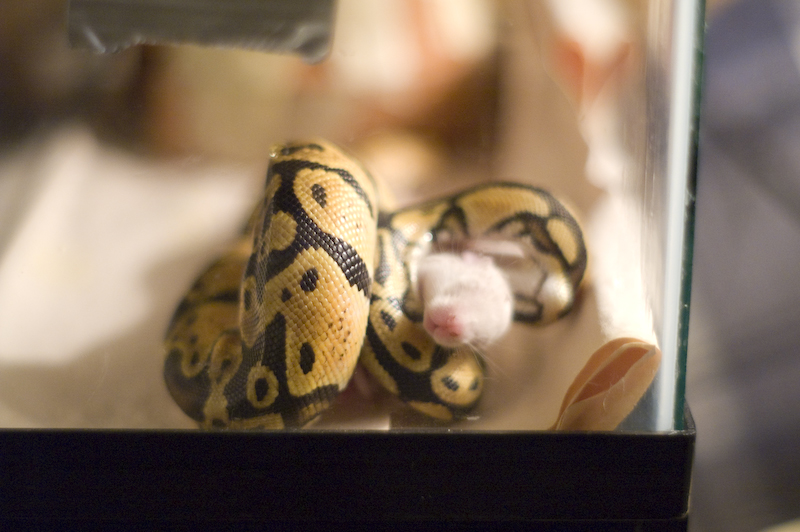
The size of the enclosure plays a significant role in the overall well-being of small snakes. Provide a secure glass or plastic terrarium with proper ventilation to ensure adequate airflow within the habitat. It is important to strike the right balance — the enclosure should offer enough space for the snake to move around freely without being overly spacious, which can lead to stress.
It’s akin to finding the perfect home — neither too cramped nor too spacious. The ideal enclosure size will allow your tiny snake to explore its surroundings while feeling safe and secure in its new environment.
Substrate Selection
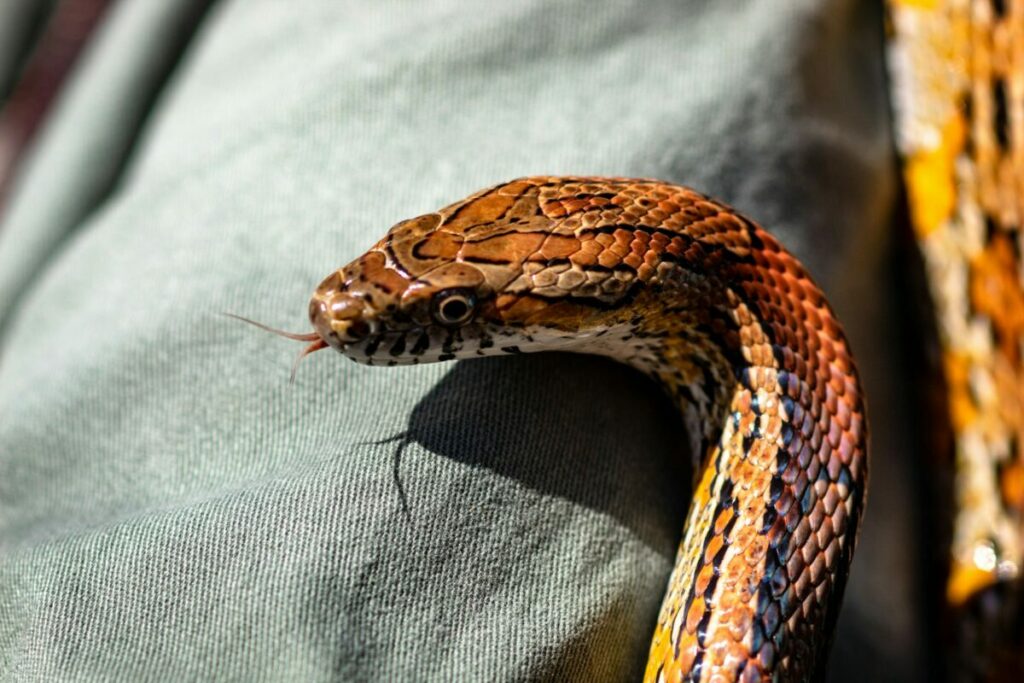
Selecting the right substrate is essential for creating a comfortable and clean environment for baby and small snakes. To mimic their natural habitat, use appropriate substrate such as aspen or reptile carpet. These substrates provide a soft and safe surface for the snakes to crawl on while also helping to maintain cleanliness within the enclosure.
It’s important to note that certain substrates, such as pine and cedar shavings, should be avoided as they can be harmful to small snakes due to their potential toxicity. Selecting the right substrate not only ensures the comfort of your tiny snake but also promotes a healthier living environment by minimizing potential health risks associated with unsuitable bedding materials.
Providing an appropriately sized enclosure and choosing the right substrate are fundamental components of creating a safe and comfortable living space for baby and small snakes. Let’s further explore other critical aspects of housing these adorable reptiles.]
See Related: 7 Different Types of Snake Species in Hawaii’s Ecosystem
Integrating a Tiny Snake into Your Living Space
When integrating a tiny snake into your living space, the focus should be on providing an environment that mirrors the natural conditions and fulfills the needs of these delicate creatures. Let’s first discuss creating an ideal microclimate within their enclosure.
Temperature and Lighting
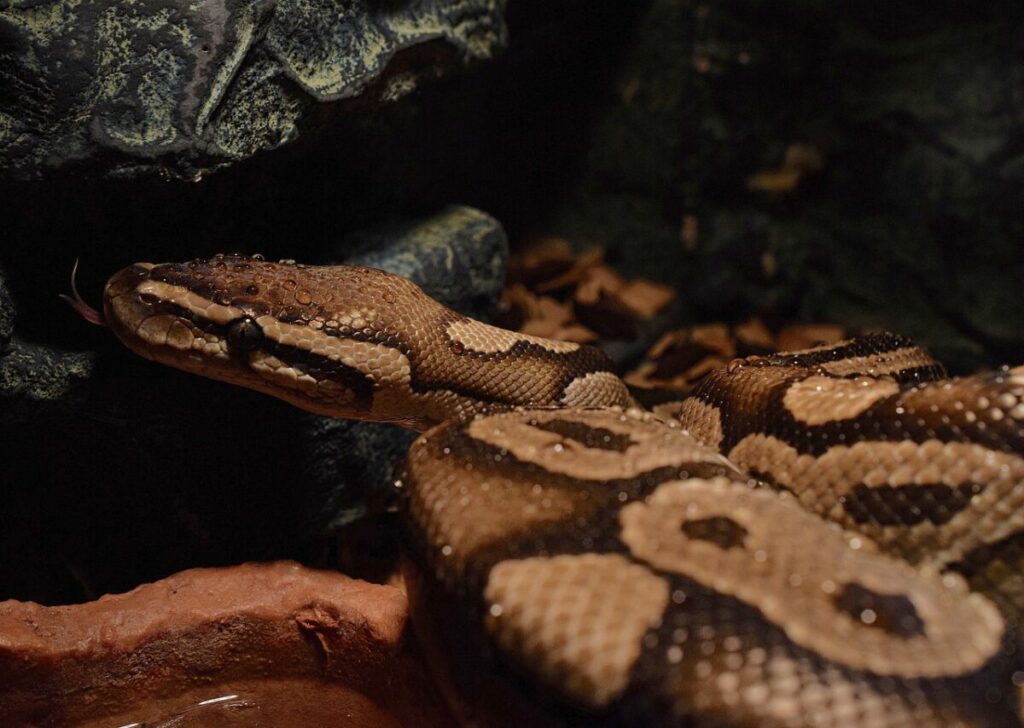
Maintaining proper temperature and humidity levels in the habitat is crucial. Aim for a warm basking spot at one end of the enclosure while ensuring a cooler zone at the other end. Heat mats or heat lamps can help achieve this. The temperature gradient allows for thermoregulation, which is essential for your tiny snake’s health and comfort.
Tips for Managing Temperature and Lighting:
- Use a thermometer and hygrometer to monitor the temperature and humidity levels.
- Create a consistent day-night cycle using timers for heating lamps to mimic natural conditions.
Hide Boxes and Climbing Structures
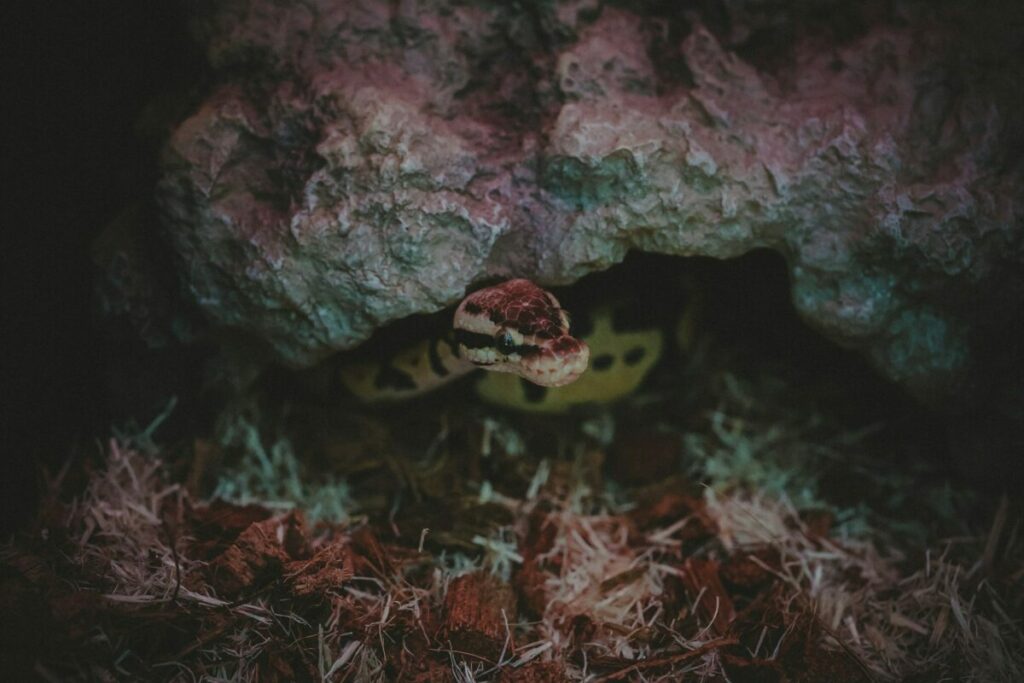
In addition to controlling the climate, it’s important to provide hide boxes, branches, and other climbing structures within their habitat. These elements not only make the snake feel secure but also offer enrichment opportunities for your tiny snake.
By ensuring these elements are present in your pet snake’s habitat, you can help them feel comfortable in their new home. A happy environment significantly contributes to their well-being.
Transitioning from creating an ideal habitat for tiny snakes, let’s now shift our focus to gaining an understanding of essential care advice for these captivating pets.
Essential Care Advice for Tiny Snake Pets
Taking care of a tiny snake as a pet can be both rewarding and challenging. From feeding schedules to health monitoring, ensuring the well-being of your tiny scaly friend requires attention to detail and a solid understanding of their needs.
Feeding Schedule
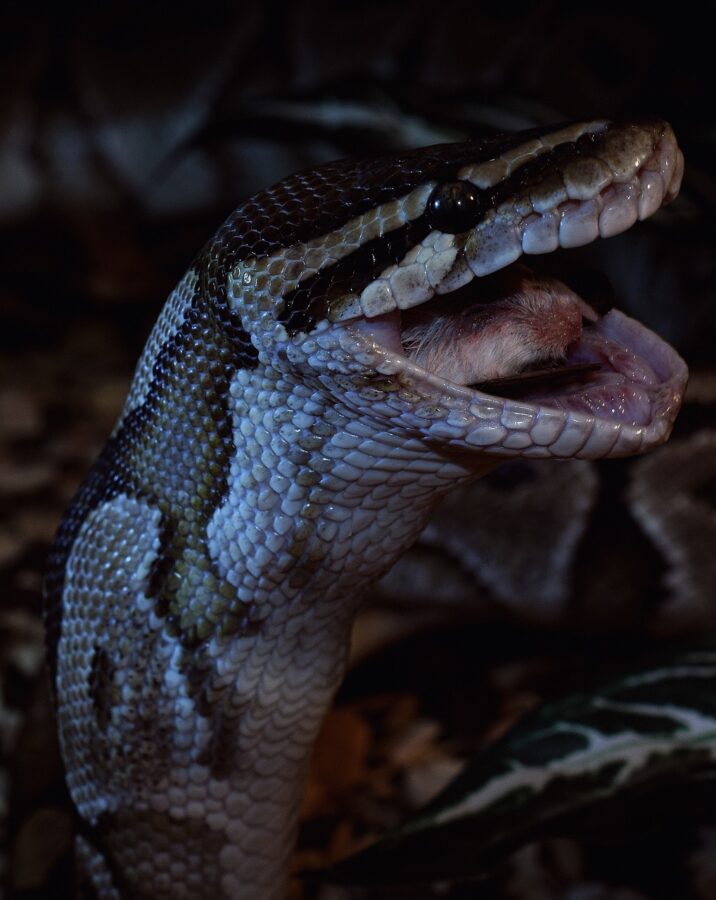
Tiny snakes have specific dietary needs based on their species, age, and size. It’s crucial to establish a consistent feeding schedule that aligns with their natural eating habits. Most small snake species typically consume appropriately sized mice or other small prey once a week. This regular feeding pattern helps maintain their nutritional balance and overall well-being.
Feeding your tiny snake requires attention to detail, especially when it comes to choosing prey of the right size. It’s essential to ensure that the size of the prey matches the snake’s own size. Feeding them prey that’s too large can lead to health issues and digestive problems, while prey that’s too small may not provide adequate nutrition. Observation during feeding time is important; it allows you to monitor their eating behavior and make adjustments if necessary.
Health Monitoring
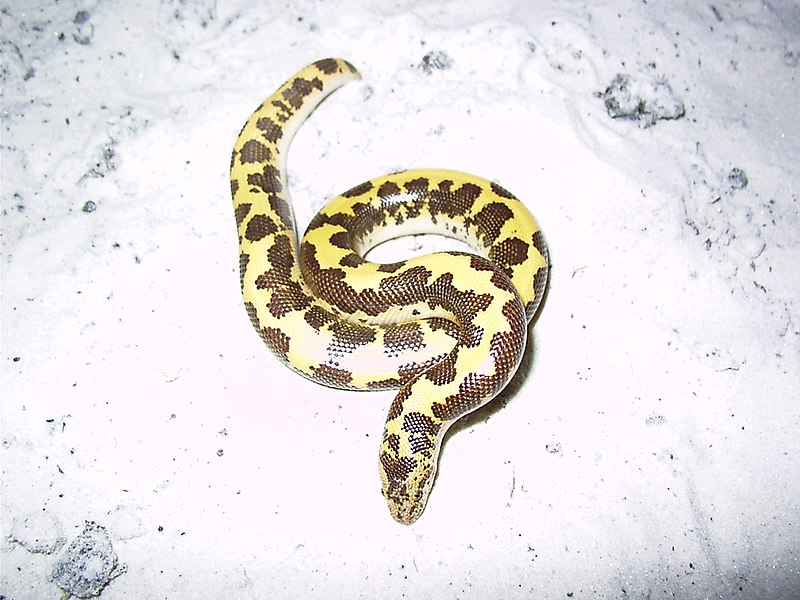
Regularly monitoring your tiny snake’s health and behavior is vital for early detection of any potential issues. Keep an eye out for changes in appetite, weight loss, lethargy, abnormal shedding, or any signs of illness. Any deviations from their usual behavior should prompt a visit to a reptile veterinarian for a thorough assessment.
Monitoring your tiny snake’s health is crucial due to their ability to hide signs of illness or discomfort. As cold-blooded animals, snakes are adept at masking any health concerns, making it essential for owners to be vigilant in observing any subtle changes in their behavior or appearance.
If you notice your tiny snake exhibiting reduced activity levels or spending extended periods in hiding, it could be an indication of an underlying health issue that requires attention. Promptly seeking professional veterinary care when needed shows that you prioritize the long-term health and happiness of your petite serpent companion.
Pet-Friendly Snake Species: Pros and Cons of the Top Candidates
When choosing a tiny snake as a pet, it’s important to consider the advantages and limitations that come with each species. While they may be small in size, their individual needs and characteristics can vary greatly, affecting your overall experience as a pet owner. Let’s examine the pros and cons of some popular small snake species to help you make an informed decision.
Kenyan Sand Boa
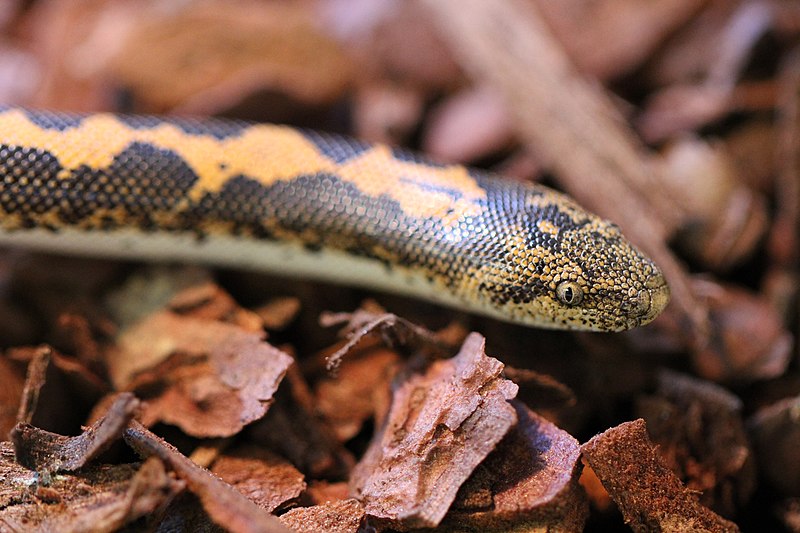
The Kenyan Sand Boa is a great choice for those looking for a low-maintenance snake. Males typically grow to 10-14 inches, making them easy to care for, and they exhibit a variety of cool morphs that add visual appeal. They eat well, are docile, and generally not overly expensive. However, it’s important to note that they tend to hide most of the time, so you may not see them often.
Nuevo Leon Kingsnake
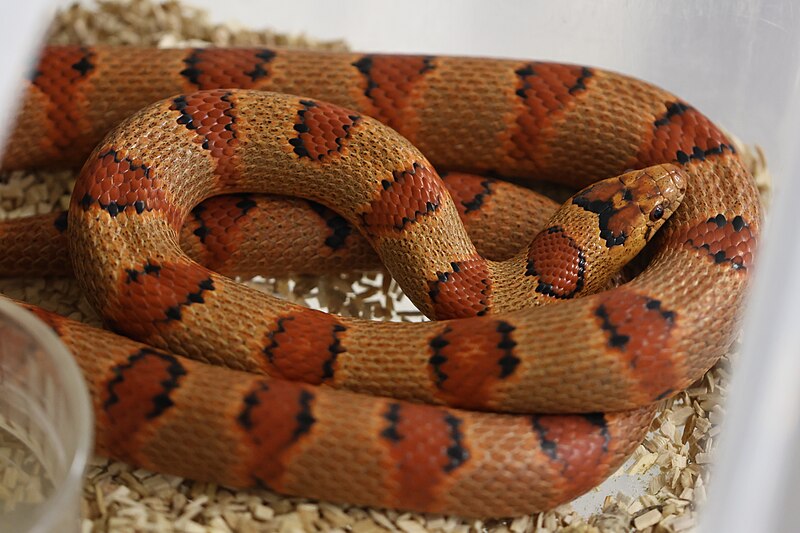
The Nuevo Leon Kingsnake is another excellent option due to its small size (under 3 feet long) and availability in a variety of colors. These snakes are underrated compared to more popular species, making them an attractive choice for enthusiasts looking for something unique. One potential drawback is the need for responsible handling as snakes of this size may be more delicate compared to larger species.
Corn Snake
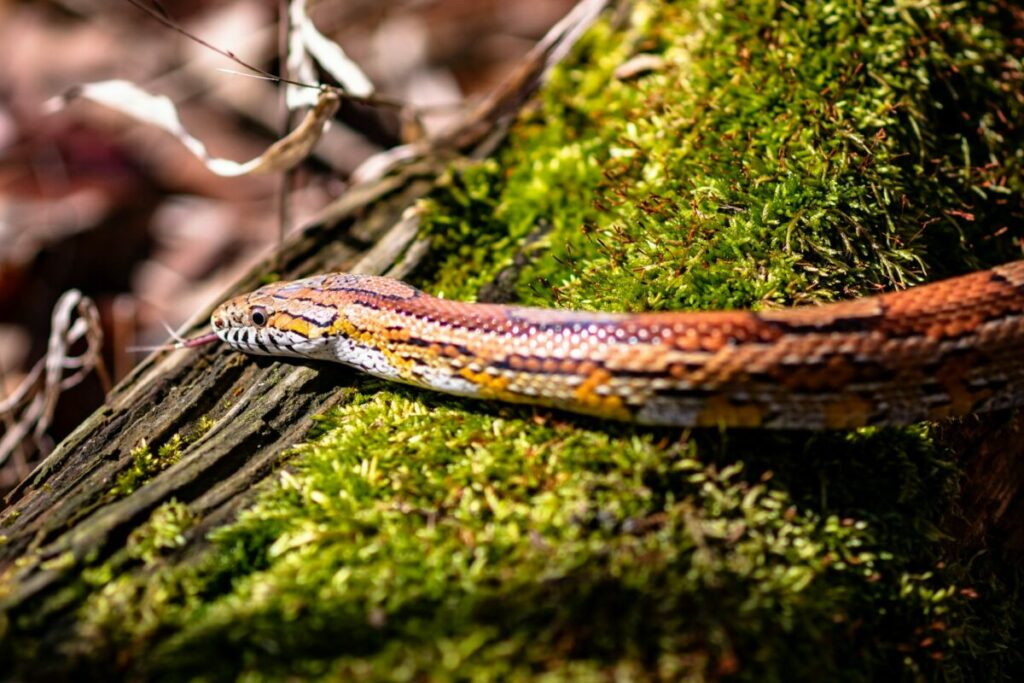
The Corn Snake is renowned for its small size, affordability, docility, and ease of care. They are available in a wide range of color morphs, adding to their visual appeal. Being relatively undemanding in terms of care requirements, corn snakes make great pets for beginners. However, like all snake species, it’s essential to ensure appropriate enclosure size and heating for their habitat.
Garter Snake
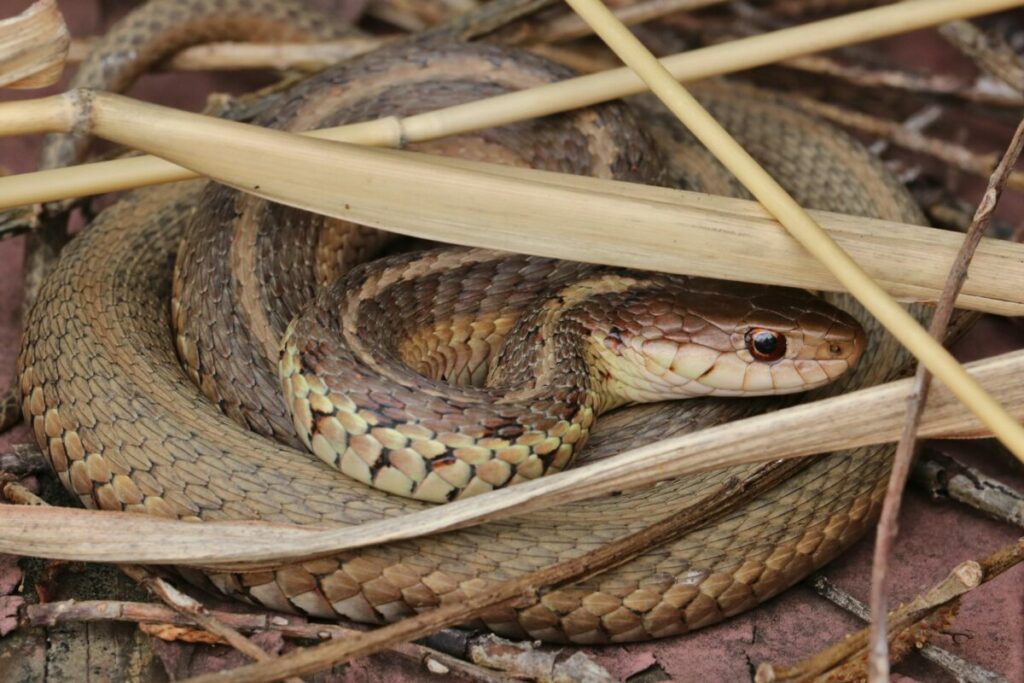
The Garter Snake is known for its small size and unique appearance, making it an ideal choice for enthusiasts looking for something different. They boast distinctive patterns and coloration and can be found in various habitats across North America. It’s important to note that garter snakes give birth to live young and require specialized care when handling or interacting with them.
Ball Python
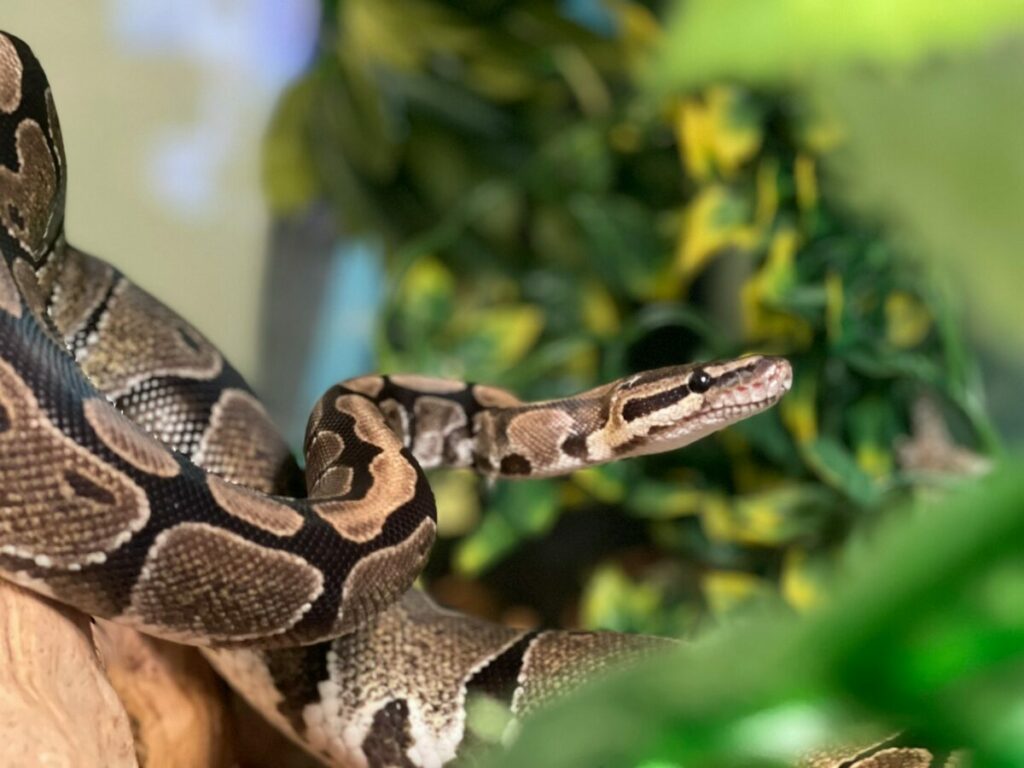
The Ball Python is a popular option due to its manageable size (grows up to five feet long), non-aggressive nature, and ease of handling. They are generally low-maintenance when it comes to feeding but do require careful monitoring of their enclosure temperature and humidity levels. Reptile enthusiasts should take into consideration their life expectancy of up to 30 years before committing to owning one.
Now that we’ve explored the unique characteristics of these small snake species, each with its own distinct set of advantages and disadvantages, we’re better equipped to make an informed decision when considering them as potential pets.
Understanding the nuances of each tiny snake species empowers you to choose the perfect reptilian companion suited to your lifestyle and care abilities.